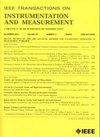Oil–Gas–Water Three-Phase Flow Pattern Identification Through Parallel Decision Trees With Differential Pressure and Ultrasonic Sensors
IF 5.9
2区 工程技术
Q1 ENGINEERING, ELECTRICAL & ELECTRONIC
IEEE Transactions on Instrumentation and Measurement
Pub Date : 2024-10-07
DOI:10.1109/TIM.2024.3470252
引用次数: 0
Abstract
A deep understanding of oil–gas–water three-phase flow behaviors and mechanics has great significance for flow controlling and modeling, production efficiency improvement, and operation safety assurance. To accurately identify horizontal oil–gas–water three-phase flow patterns, a decision-level fusion method with a parallel-tree structure is proposed based on a combined differential pressure (DP) and pulse wave ultrasonic Doppler (PWUD) sensor. With advantages of nonintrusive, easy-to-mount operation, and low cost, the combined sensor can simultaneously acquire various flowing information, including instantaneous DP fluctuations, time-varying echograms, and velocity profiles. By analyzing the dynamic sensor responses to different flow behaviors, typical flow characteristics of oil–gas–water three-phase flow are first revealed. On this basis, several features are extracted from the time-accumulated echograms, average flow velocity time series, and decomposed DP fluctuations to objectively characterize the flow patterns from different perspectives in the time, space, and time-frequency domains. Then, two parallel decision trees are constructed to, respectively, identify the gas-liquid interphase structure and oil-water interphase structure. Using the visibility of tree structures, the ability of these extracted features for flow structure distinguishment is analyzed. Finally, the final decision on the oil–gas–water three-phase flow pattern was generated by fusion the outputs of two decision trees. Tenfold cross-validation method is adopted for model performance evaluation. The results show that 12 types of oil–gas–water three-phase flow pattern are identified with the overall identification accuracy of 92.1%. This study provides a simple, affordable, and nonintrusive solution with good intelligibility and interpretability for flow pattern identification of complex industrial three-phase flows.利用差压和超声波传感器,通过并行决策树识别油气水三相流模式
深刻理解油气水三相流的流动行为和力学规律,对于流量控制和建模、提高生产效率、保障运行安全具有重要意义。为准确识别水平油气水三相流模式,提出了一种基于差压(DP)和脉冲波超声多普勒(PWUD)组合传感器的平行树结构决策级融合方法。该组合传感器具有非侵入式、易于安装、成本低等优点,可同时获取各种流动信息,包括瞬时差压波动、时变回声图和速度剖面图。通过分析传感器对不同流动行为的动态响应,首先揭示了油气水三相流的典型流动特征。在此基础上,从时间累积回声图、平均流速时间序列和分解的 DP 波动中提取若干特征,从时间、空间和时频域的不同角度客观地描述流动模式。然后,构建两棵平行的决策树,分别识别气液相间结构和油水相间结构。利用树结构的可见性,分析了这些提取特征在流动结构区分方面的能力。最后,通过融合两棵决策树的输出结果,得出油气水三相流模式的最终判定结果。模型性能评估采用十倍交叉验证法。结果表明,共识别出 12 种油气水三相流模式,总体识别准确率为 92.1%。这项研究为复杂工业三相流的流动模式识别提供了一种简单、经济、非侵入式的解决方案,具有良好的可理解性和可解释性。
本文章由计算机程序翻译,如有差异,请以英文原文为准。
求助全文
约1分钟内获得全文
求助全文
来源期刊

IEEE Transactions on Instrumentation and Measurement
工程技术-工程:电子与电气
CiteScore
9.00
自引率
23.20%
发文量
1294
审稿时长
3.9 months
期刊介绍:
Papers are sought that address innovative solutions to the development and use of electrical and electronic instruments and equipment to measure, monitor and/or record physical phenomena for the purpose of advancing measurement science, methods, functionality and applications. The scope of these papers may encompass: (1) theory, methodology, and practice of measurement; (2) design, development and evaluation of instrumentation and measurement systems and components used in generating, acquiring, conditioning and processing signals; (3) analysis, representation, display, and preservation of the information obtained from a set of measurements; and (4) scientific and technical support to establishment and maintenance of technical standards in the field of Instrumentation and Measurement.
 求助内容:
求助内容: 应助结果提醒方式:
应助结果提醒方式:


